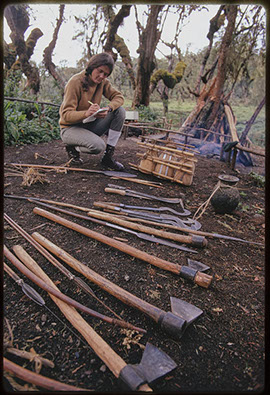



Gorillas and their Neighbors
Mountain gorillas live surprisingly close to people despite their challenging environment. Rwanda, home to many of the remaining mountain gorillas, is Africa’s most densely populated country. With limited land and a historical reliance on farming, trapping, hunting, free-grazing cattle, and collecting firewood, Rwandan families moved ever higher up mountain slopes, clearing trees as they went. Their activities encroach on, shrink, and fragment forest habitats, limiting the availability of the foods and shelter that gorillas need to survive.
By the late 1800s, forest clearing had separated gorilla populations. Throughout the 1900s, human population growth in Rwanda made land scarce, so people bordering protected areas sought resources in those areas out of necessity. Low levels of park funding and sporadic rule enforcement exacerbated these problems. Among Fossey’s first tasks at Karisoke were to eliminate poaching, cattle grazing, and human encroachment within the park.
Bob Campbell (British Kenyan resident, 1930-2014)
(top row) Dian Fossey documenting confiscated weapons and snares, Rwanda. 1969; Dian Fossey reviewing anti-poaching guards with park conservator. Her pet blue monkey Kima stands on her arm, Rwanda. 1971; Antipoaching patrol member [Nemeye?] driving encroaching Ankole cattle out of park, Rwanda. 1970
(bottom row) Dian Fossey observing gorillas in the field with binoculars. 1969; Duiker trapped in a snare, Rwanda. 1969; Agricultural terraces on steep hills, Rwanda. 1969